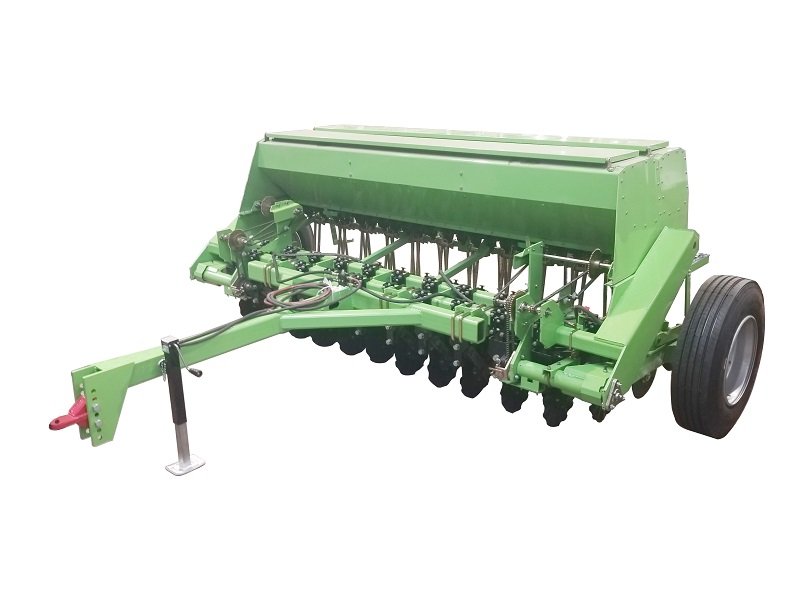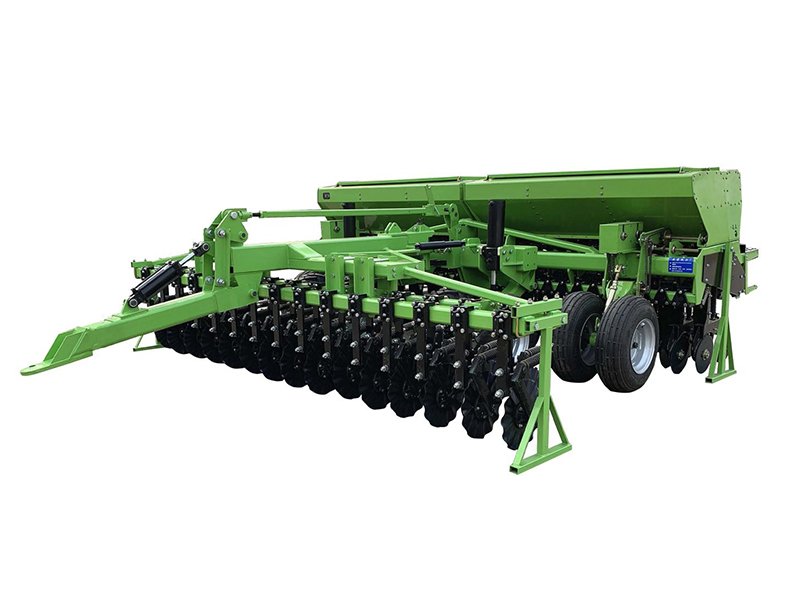

- Design and Application
Compact No-till Drills:
A dedicated no-till drill, designed specifically for seeding directly into unprepared soil with residue cover.
Ideal for farms with hard soils or heavy residue where no-till is the primary method.
Integrated unit with built-in no-till features (coulters, depth control, and seed metering).
Heavy Duty No-till Drills:
A flexible system combining the Center Pivot Hitch with a 3-point drill, offering both min-till and no-till capabilities.
The hitch allows for precise control over coulter depth, enabling use in reduced tillage or Light/moderate/heavy no-till conditions.
Requires pairing with a compatible drill for complete functionality.
2. Versatility
Compact No-till Drills:
Primarily suited for no-till applications. Limited use in tilled fields.
Options for adding small seed or native grass boxes enhance seed type flexibility.
Less adaptable for operations requiring frequent shifts between no-till and min-till.
Center Pivot Hitch + Min-Till Drill:
More versatile, capable of handling both no-till and min-till operations by adjusting coulter settings and drill depth.
Ideal for farmers needing the flexibility to adapt to various field conditions.
Can use the 3-point drill independently in tilled fields without the Center Pivot Hitch.
3. Working Components and Clearance
Compact No-till Drills:
The drill bits and other working components are relatively small and densely arranged. In the case of heavy residue, it is easy to cause the residue to wrap around the drill bits and affect the normal operation of the machine. The relatively narrow clearance also makes it easy for the residue to accumulate and block.
Heavy Duty No-till Drills:
The tillage parts are designed with a certain rake angle and curvature, which can effectively cut and turn the heavy residue, reducing the resistance and making the residue more easily pass through the machine. The clearance between the working components and the frame is relatively large, which can prevent the residue from being blocked and entangled.
4. Operational Ease
Compact No-till Drills:
Simple, integrated system with fewer adjustments needed during operation.
Features like T-handle depth control and a 4-speed gearbox make seed placement and rate adjustments straightforward.
Easier setup and operation compared to the Center Pivot Hitch system.
Center Pivot Hitch + Min-Till Drill:
More complex setup due to the modular nature (hitch + 3-point drill).
Requires careful calibration of coulter depth and seed placement.
Once set up, it provides precision control but demands more operational knowledge.
5. Performance
Compact No-till Drills:
Heavy-duty no-till coulters and openers provide consistent seed placement in challenging no-till conditions.
Transport width can be restrictive for narrow roads.
Requires a tractor with above 75 HP.
Center Pivot Hitch + Min-Till Drill:
Hydraulic coulter adjustments offer precise control for both no-till and min-till applications.
Can be detached and used with just the drill for min-till in prepped fields.
Similar power requirements, but versatility allows use with lighter tractors in some scenarios.
6. Maintenance
Compact No-till Drills:
Integrated system is easier to maintain overall.
Regular servicing of coulters, openers, and seed metering components is required.
Center Pivot Hitch + Min-Till Drill:
Requires maintenance of both the hitch and the drill.
Additional hydraulic components and adjustments may require more attention over time.
7. Cost
Compact No-till Drills:
A higher initial cost due to its integrated no-till design.
Long-term savings from reduced soil preparation and versatile seed handling.
Center Pivot Hitch + Min-Till Drill:
Lower upfront cost if you already own a compatible 3-point drill.
Greater initial investment if purchasing both components new.
Recommendations:
Choose the Compact No-till Drills if:
No-till is your primary seeding method.
You need an integrated, low-maintenance system.
You want a dedicated no-till machine with minimal setup and adjustments.
Choose the Heavy Duty No-till Drills if:
You need flexibility between no-till and min-till.
You already own a compatible 3-point drill.
Your fields have mixed conditions, requiring adaptability.